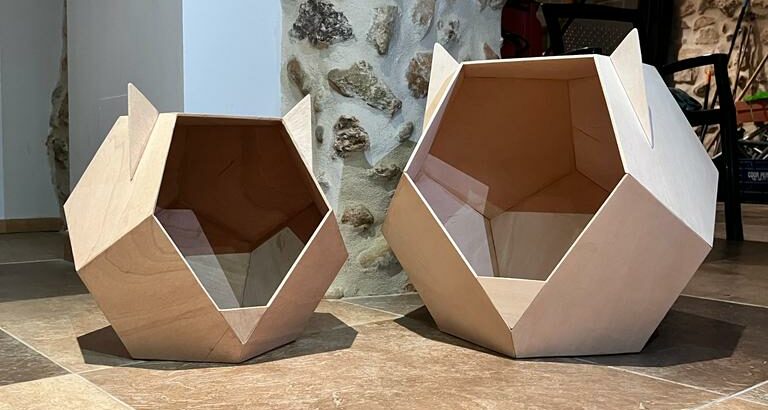Large house cats add such charm and comfort to any home. And because of their size, they typically demand more accommodation compared to smaller cat housemates, making your living space a crowded house with an indoor feline companion. Looking after them properly is key to ensure they are healthy, happy and thrive. In this article, we’ll discuss some of the best ways to care for large house cats indoors, including diet, exercise, environment, grooming and health needs.
Understanding the Needs of Large House Cats
Big house cats might be typed like Maine Coons, Ragdolls or domestic shorthairs that just happen to grow large. These life forms vary in size, which will affect their diet, amount of exercise and comfort needs. These cats may also be hungrier and need more space to roam. Plus, big cats are at higher risk for joint problems, so it’s important to prevent them by keeping their weight down.
Proper Diet for Large House Cats
Bringing up a big house cat in the groomed ambience of indoors demands a mix of healthy nutrition and portion control. Indoor cats are not as active, which puts them at a higher risk of becoming overweight. Overfeeding is a risk that can compound joint and other health issues; you also risk feeding him a large number of treats or snacks that are unhealthy.
They need a high-quality diet for large or indoor cats. These diets typically offer the perfect ratio of protein, fat and carbohydrates, and are suitable for maintaining muscle mass without adding pounds. It’s also recommended to get better control over portion sizes and not to free-feed, but rather to have regular feeding times. Consult your pet’s veterinarian to help plan the most appropriate diet for your cat’s breed, age, and health status.
Encouraging Exercise and Physical Activity
One concern in keeping large house cats indoors is ensuring sufficient exercise. Unlike outdoor cats, who are free to forage, indoor cats need to be motivated to move. For one, physical activity supports strong muscles, a healthy weight and behaviour associated with boredom.
It is important to establish interactive play time. Toys that activate the hunting instinct, including feather wands and laser pointers, promote exercise and mental activity. House cats tend to appreciate perching structures such as a tall cat tree or cat shelves. They not only encourage climbing activity, they also leave important height space for your cat to perch and watch over their surroundings.
Creating a Comfortable Indoor Environment
Big house cats need enough space to lengthen out, jump and sleep as they please. A confined living space can cause stress, behaviour problems. Take good care of your big cat Make sure your home has space to move and comfortable resting spots.
Add several soft bedding sites in quiet locations where your cat can escape undisturbed. If your cat is large, there are litter boxes for big cats – they are excellent for cats, for comfortable use, and they need to be big. Keep these boxes clean to avoid smelling and promote a regular habit for us.
A third is temperature regulation. Some are large and have thick fur, such as Maine Coons, and may like cool areas, while some like it warm. Listen to your cat! If your cat prefers a warmer or cooler room, adjust your heating or cooling to accommodate them.
Grooming Needs of Large House Cats
Large house cats have grooming requirements to keep them healthy and comfortable. Larger cats typically have a heavier or longer coat that may become matted or shed excessively if not groomed on a regular basis. Regularly brush your cat’s fur at least a few times a week, this helps reduce shedding and mats.
Big cats also require regular nail trimmings to keep their nail growth in check and lower the risk of scratching (during play and while cleaning!). And keep their teeth in check with dental treats and occasional vet cleanings since your pet’s dental health is related to their health in general.
You don’t normally need to bathe a cat unless she gets dirty, but if you do, make sure to use cat products, not dog or human products, which might irritate the skin.
Health Monitoring and Veterinary Care
Because of their stature, larger house cats can be prone to some medical problems such as hip dysplasia, arthritis and heart problems. Regular veterinary visits are important to identify and treat any problems early.
Monitor for changes in your cat’s behaviour, appetite or mobility because they can be signs of health problems. Keeping a healthy weight is one of the most effective ways to avoid joint strain and other problems. If your cat shows signs of arthritis or other chronic conditions, your vet might suggest supplements or treatments.
Vaccines should be current, as well as parasite control and dental care. The only preventative health plan you will need to keep your big house cat happy and playful indoors.
Mental Stimulation and Emotional Well-being
Big house cats can be intelligent and inquisitive and if not given any form of mental stimulation can become bored and stressed. Feeding via puzzle feeders or hiding treats around the house helps them solve problems and keeps them mentally alert.
The fact that it is also bonding time between you and your cat prevents loneliness and strengthens your bond. Some big cats like to be lap companions and others enjoy playtime, the outdoor cat recommends. You feel as though you know and respect your cat personally, and thus the fluff-ball feels loved and safe.
Safety Considerations for Indoor Living
By keeping your large house cat indoors you are providing protection from outdoor hazards such as traffic, predators, and disease. But the home must be made safe where cats are concerned. Install window and balcony screens to prevent falls. Do not have poisonous plants or hazardous household fixtures in the access area.
Big cats can be powerful jumpers or climbers, so tie down breakables and offer safe places to explore. If you choose to allow your cat outdoors, a leash and harness or outdoor enclosure are options that will allow your cat to breathe fresh air, but are fewer risks.
Conclusion
When it comes to caring for these large house cats, extra consideration may need to be taken for size. Provide your large feline pal with healthy, balanced food; engage your pet in regular physical and mental exercise; Maintain grooming and health regimens; and ensure a safe and comfortable environment, and you’ll help your big cat live its best life. House cats are magnificent pets that, if cared for well, will provide you with happiness and warmth for years.



